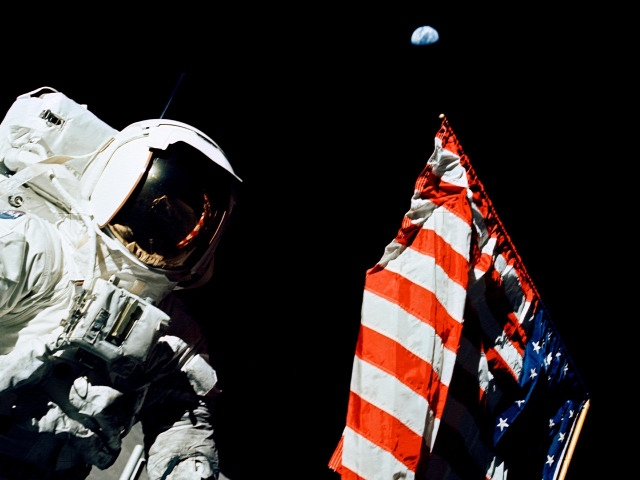
The Space Race was a 20th-century competition between two Cold War rivals, the Soviet Union (USSR) and the United States (US), for supremacy in spaceflight capability. It had its origins in the missile-based nuclear arms race between the two nations that occurred following World War II, aided by captured German missile technology and personnel from the Aggregat program. The technological superiority required for such supremacy was seen as necessary for national security, and symbolic of ideological superiority. The Space Race spawned pioneering efforts to launch artificial satellites, unmanned space probes of the Moon, Venus, and Mars, and human spaceflight in low Earth orbit and to the Moon.

Hasábszélesnél ne legyen nagyobb kép?
The competition began on August 2, 1955, when the Soviet Union responded to the US announcement four days earlier of intent to launch artificial satellites for the International Geophysical Year, by declaring they would also launch a satellite "in the near future". The Soviet Union beat the US to this, with the October 4, 1957 orbiting of Sputnik 1, and later beat the US to the first human in space, Yuri Gagarin, on April 12, 1961. The race peaked with the July 20, 1969 US landing of the first humans on the Moon with Apollo 11. The USSR tried but failed manned lunar missions, and eventually cancelled them and concentrated on Earth orbital space stations.

Szöveg körbefolyás?
A period of détente followed with the April 1972 agreement on a co-operative Apollo–Soyuz Test Project, resulting in the July 1975 rendezvous in Earth orbit of a US astronaut crew with a Soviet cosmonaut crew. The end of the Space Race is harder to pinpoint than its beginning, but it was over by the December, 1991 dissolution of the Soviet Union, after which true spaceflight cooperation between the US and Russia began.

ENNEK KÖZÉPEN KÉNE LENNIE
The Space Race has left a legacy of Earth communications and weather satellites, and continuing human space presence on the International Space Station. It has also sparked increases in spending on education and research and development, which led to beneficial spin-off technologies.
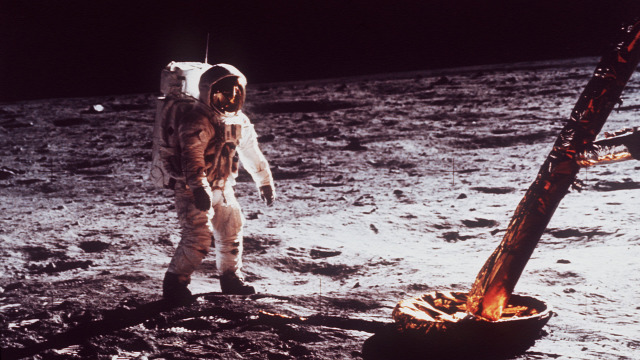
Ennek a képnek középen kéne lennie :(
First artificial satellite[edit]
In 1955, with both the United States and the Soviet Union building ballistic missiles that could be utilized to launch objects into space, the "starting line" was drawn for the Space Race.[33] In separate announcements four days apart, both nations publicly announced that they would launch artificial Earth satellites by 1957 or 1958.[33] On July 29, 1955, James C. Hagerty, president Dwight D. Eisenhower's press secretary, announced that the United States intended to launch "small Earth circling satellites" between July 1, 1957, and December 31, 1958, as part of their contribution to the International Geophysical Year (IGY).[33] Four days later, at the Sixth Congress of International Astronautical Federation in Copenhagen, scientist Leonid I. Sedov spoke to international reporters at the Soviet embassy, and announced his country's intention to launch a satellite as well, in the "near future".[33] On August 30, 1955, Korolev managed to get the Soviet Academy of Sciences to create a commission whose purpose was to beat the Americans into Earth orbit: this was the de facto start date for the Space Race.[33] The Council of Ministers of the Soviet Union began a policy of treating development of its space program as a classified state secret.
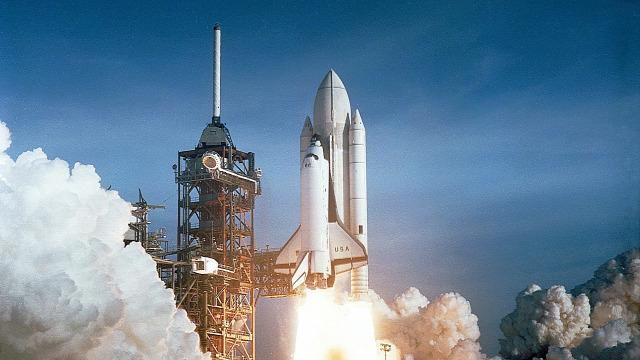 EZ A SOR MIÉRT VOLT ÜRES?
EZ A SOR MIÉRT VOLT ÜRES?
Initially, President Eisenhower was worried that a satellite passing above a nation at over 100 kilometers (62 mi), might be construed as violating that nation's sovereign airspace.[34] He was concerned that the Soviet Union would accuse the Americans of an illegal overflight, thereby scoring a propaganda victory at his expense.[35] Eisenhower and his advisors believed that a nation's airspace sovereignty did not extend into outer space, acknowledged as the Kármán line, and he used the 1957–58 International Geophysical Year launches to establish this principle in international law.[34] Eisenhower also feared that he might cause an international incident and be called a "warmonger" if he were to use military missiles as launchers. Therefore, he selected the untried Naval Research Laboratory's Vanguard rocket, which was a research-only booster.[36] This meant that von Braun's team was not allowed to put a satellite into orbit with their Jupiter-C rocket, because of its intended use as a future military vehicle.[36] On September 20, 1956, von Braun and his team did launch a Jupiter-C that was capable of putting a satellite into orbit, but the launch was used only as a suborbital test of nose cone reentry technology.[36]
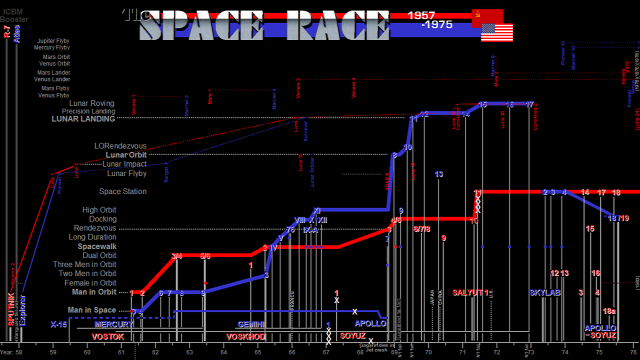
Korolev received word about von Braun's 1956 Jupiter-C test, but thinking it was a satellite mission that failed, he expedited plans to get his own satellite in orbit. Since his R-7 was substantially more powerful than any of the American boosters, he made sure to take full advantage of this capability by designing Object D as his primary satellite.[37] It was given the designation 'D', to distinguish it from other R-7 payload designations 'A', 'B', 'V', and 'G' which were nuclear weapon payloads.[38] Object D dwarfed the proposed American satellites, by having a weight of 1,400 kilograms (3,100 lb), of which 300 kilograms (660 lb) would be composed of scientific instruments that would photograph the Earth, take readings on radiation levels, and check on the planet's magnetic field.[38] However, things were not going along well with the design and manufacturing of the satellite, so in February 1957, Korolev sought and received permission from the Council of Ministers to create a prosteishy sputnik (PS-1), or simple satellite.[37] The Council also decreed that Object D be postponed until April 1958.[39] The new sputnik was a shiny sphere that would be a much lighter craft, weighing 83.8 kilograms (185 lb) and having a 58-centimeter (23 in) diameter.[40] The satellite would not contain the complex instrumentation that Object D had, but had two radio transmitters operating on different short wave radio frequencies, the ability to detect if a meteoroid were to penetrate its pressure hull, and the ability to detect the density of the Earth's thermosphere.[41]
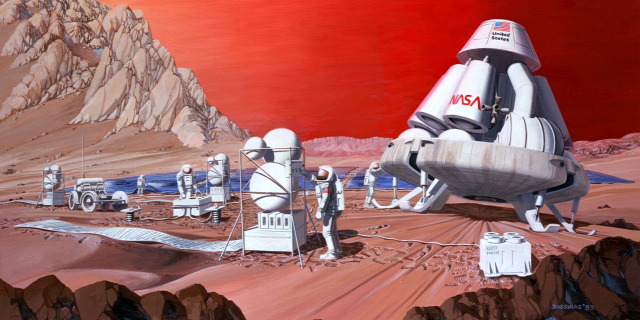
Képalá (tök random, hogy hol és mikor cuppantja rá a képaládobozt a képre és mikor nem, ezzel kéne kezdeni valamit)
These are extraordinary times. And we face an extraordinary challenge. Our strength as well as our convictions have imposed upon this nation the role of leader in freedom's cause.
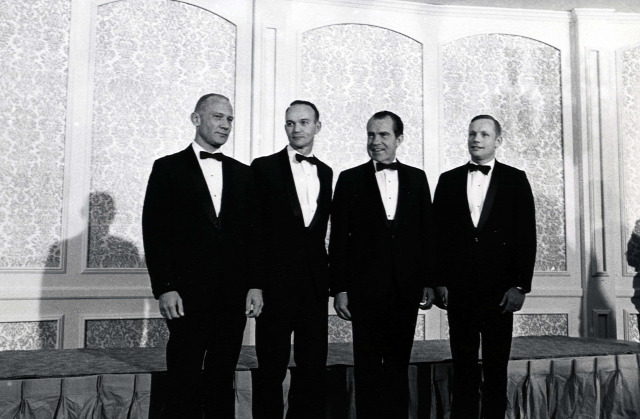
Képalá
... if we are to win the battle that is now going on around the world between freedom and tyranny, the dramatic achievements in space which occurred in recent weeks should have made clear to us all, as did the Sputnik in 1957, the impact of this adventure on the minds of men everywhere, who are attempting to make a determination of which road they should take. ... Now it is time to take longer strides—time for a great new American enterprise—time for this nation to take a clearly leading role in space achievement, which in many ways may hold the key to our future on Earth.
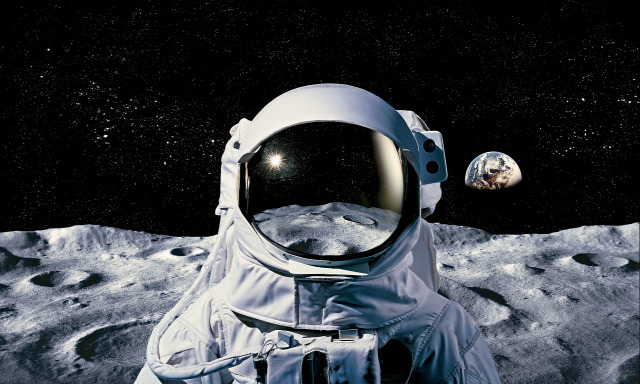
Képalá
... Recognizing the head start obtained by the Soviets with their large rocket engines, which gives them many months of lead-time, and recognizing the likelihood that they will exploit this lead for some time to come in still more impressive successes, we nevertheless are required to make new efforts on our own.

Ez egy ikonméretű kép eredetileg, de ezt is felhúzza :/
... I believe that this nation should commit itself to achieving the goal, before this decade is out, of landing a man on the Moon and returning him safely to the Earth. No single space project in this period will be more impressive to mankind, or more important for the long-range exploration of space; and none will be so difficult or expensive to accomplish.
John F. Kennedy,
Special Message to Congress on Urgent National Needs, May 25, 1961[69]





 EZ A SOR MIÉRT VOLT ÜRES?
EZ A SOR MIÉRT VOLT ÜRES?







Utolsó kommentek